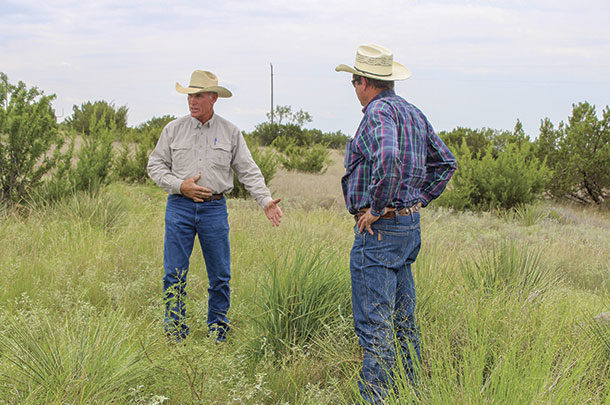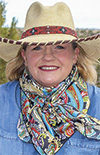That opening line pretty much guaranteed I was not going to consider that offer to lease. Most likely John Q. had a job in town. He may have been the pharmacist, owned the hardware store or been a schoolteacher. But in my neck of the woods (Texas), “running cattle” is the ultimate sexy, cool, cowboy thing to do.
The mere fact so many think it is easy offends me. That fellow on the other end of the phone hoping to lease from me needs to be managing a complex ecosystem and ensuring sustainability into the future. He is running a business where profitability is closely linked to stewardship of the land. He is not just “running cattle.”
This was not my first rodeo. I have changed lessees for these owners twice before over 24 years. We tend to choose carefully and hope to have long-term relationships. I have been threatened: “I will pay more than John Doe; aren’t you supposed to make the most money possible for the owners?” “You’ll never find someone to go along with all your stipulations.” “If I lease your place, I will decide how to operate it.” “Give me the owner’s number; I will tell him I will pay more.”
Nope, yep and nope. By all means, call the owner. He will hang up on you, guaranteed. My goal was to find the right lessee, someone who wanted to manage that complex ecosystem, strive for sustainability, make a profit. The happy ending is: Although I received the above-mentioned phone call probably a hundred times, I had four outstanding candidates to lease the ranch, and another four queued up if the first four opted out.
Serious about stewardship
What to look for in a lessee? How to find the guy or gal who can manage a complex ecosystem and steward the rangeland resource while still making a profitable living for their family? Face it, if we don’t take profitability into account, the goal of stewardship becomes just another buzzword.
Of the calls I received, only one was actually a credible possibility – and only because I had lost touch with the young man. I knew and respected him but was out-of-date on his progression in the ranching industry. The viable candidates were people I contacted, folks I knew from field days, ranch tours, word-of-mouth. I knew them to be serious about stewardship, profitable, eager to learn and progressive-type operators. I had observed them in action, often at Texas Grazing Land Coalition activities, Texas and Southwestern Cattle Raisers School for Successful Cattlemen, local workshops.
My initial concern was that none of them would want to consider this property. It is remote and, frankly, was beat up – continuously grazed, overstocked, infrastructure needing attention, definitely a ranch in rehab. Lucky for me, I had four respectable land stewards who were interested.
After a bad experience with past lessees, the owners and I were determined to make a good selection. We were in no hurry, which was key to a successful process.
I spent a day on the ranch with each potential lessee. We climbed on the side-by-side and attempted to see as much as possible. Thirty-thousand acres is a lot of ground to cover, but I wanted them to see the good, the bad and the ugly. And I wanted to gauge their goals. The owners and I have some specific goals, focusing primarily on improving rangeland conditions.
It is a mighty challenge, and I needed to know if the candidates were up to the task and aware of the degradation of the resources. Those hours on the ATV allowed me to quickly assess their mettle. Did they know the plants? Did they know how much water a cow-calf pair or a stocker needed daily? Were they savvy on stocking rates, animal unit equivalents, grazable acres and harvest efficiency?
Then I turned the tables. I asked to see country each candidate leased – in my book, that’s the “résumé” of a rancher. What does the place you operate look like? So I spent a corresponding day with each of them, riding around, looking closely at how they conducted business.
Following the days on the ranch, I asked each to tell me what they saw. I developed a few questions. What did they see as the shortcomings of the ranch? And how would they overcome those obstacles? What about the advantages? How would we collaborate, communicate? How would they handle the necessary labor?
Why would we care about the labor? The ranch is remote. School is nearly a 50-mile bus ride away with the potential for the ability to transfer to the school district only 20 miles away. Sadly, substance abuse is a real problem among ranch cowboys in the Texas Panhandle. This location is not for everybody. Leasing this ranch and putting someone out there with a young family or a fast crowd of friends is not going to get the job done. “Cowboys” who have limited skill sets and want to drive around or spend aimless time horseback are a dime a dozen. We recognize the need for the labor to be able to manage the resource, not just cake the cattle in the winter and ride a horse all summer.
Up for a challenge
By now you are thinking, “Man, she put these potential lessees through a bunch of hoops just to ‘run some cattle’.” It was exciting to find four candidates who found the opportunity to improve the conditions, something that excited and challenged them. They provided potential solutions to our challenges, grazing and monitoring plans, communication plans and really showed off their eagerness and enthusiasm. Anyone who says there are not young, enthusiastic ranchers wanting a chance to get started or expand in the business hasn’t looked around very hard.
Finally, the owners and I interviewed them together. That face-to-face meeting is important. It also allowed the potential lessees to gauge if they wanted to enter into a challenging ranch rehab and do business with the owners. These things go both ways. Our extensive process allowed for plenty of time for both sides to assess the situation and evaluate the potential.
The best advice for folks looking to lease land is really pretty simple. Think of it as a job interview. What do you bring to the table? How will you work with the landowner? Plan to forge a relationship, stewarding the land for the good of the owner and your own profitability. If you are just looking to “run some cattle,” put that phone down and go look for something else to do.
Ranching is the management of a complex ecosystem, grazing animals all with the goal of economic and environmental sustainability. It’s not rocket science. Literally. It’s way more complicated. ![]()
PHOTO: Frank Price (left) of Sterling City, Texas, explains the improving forage conditions on a lease property to Grant Teplicek of USDA-NRCS. Photo provided by Jenny Pluhar.

-
Jenny Pluhar
- Executive Director
- Texas Grazing Land Coalition
- Email Jenny Pluhar











